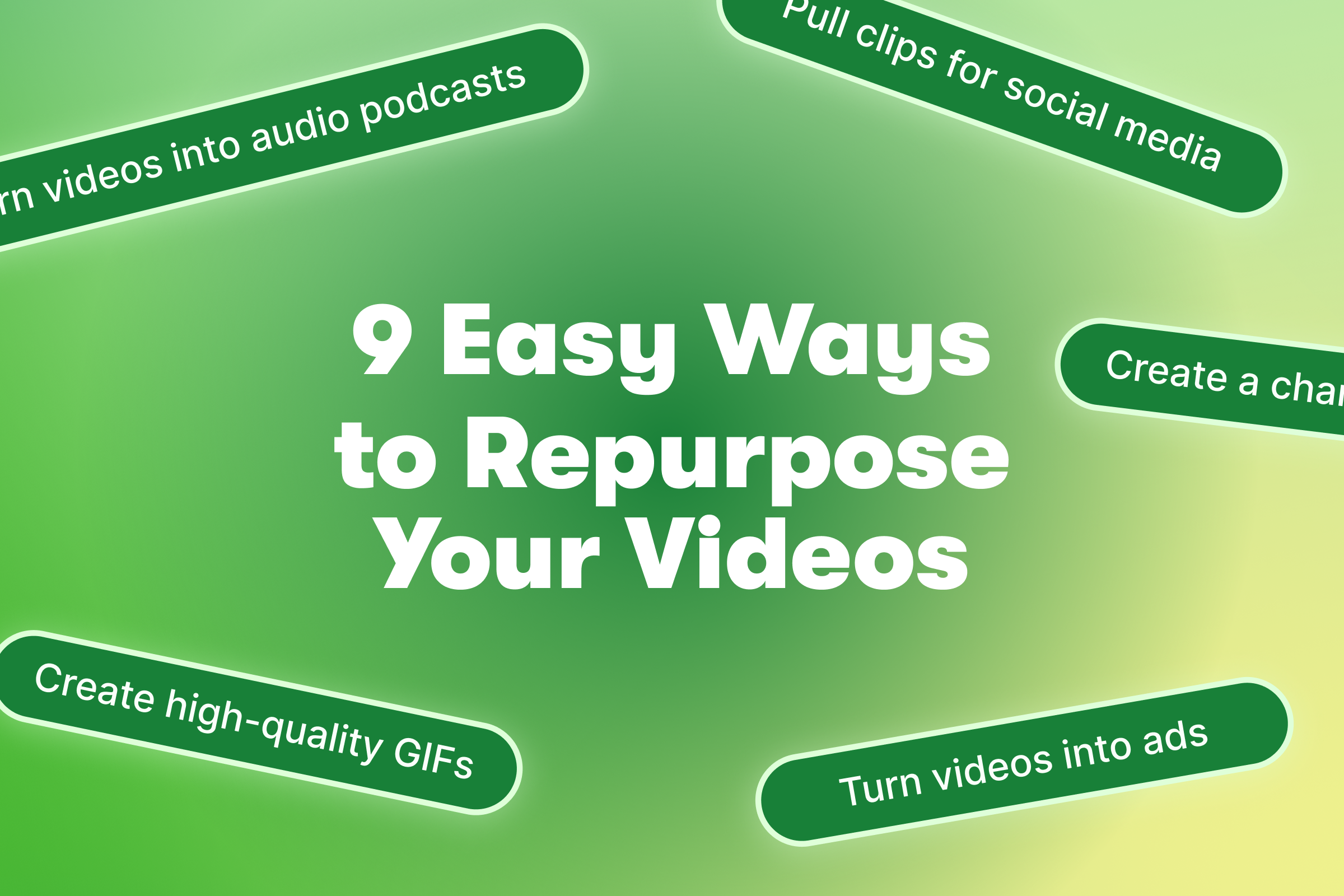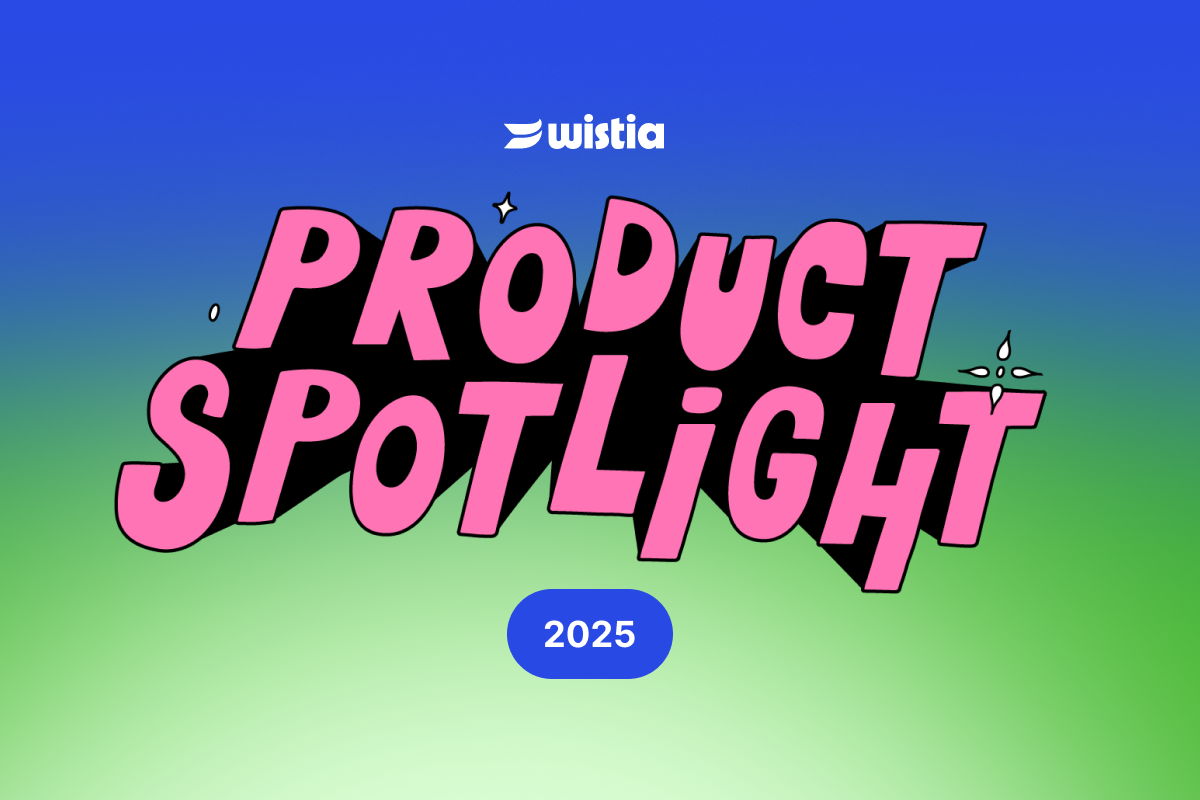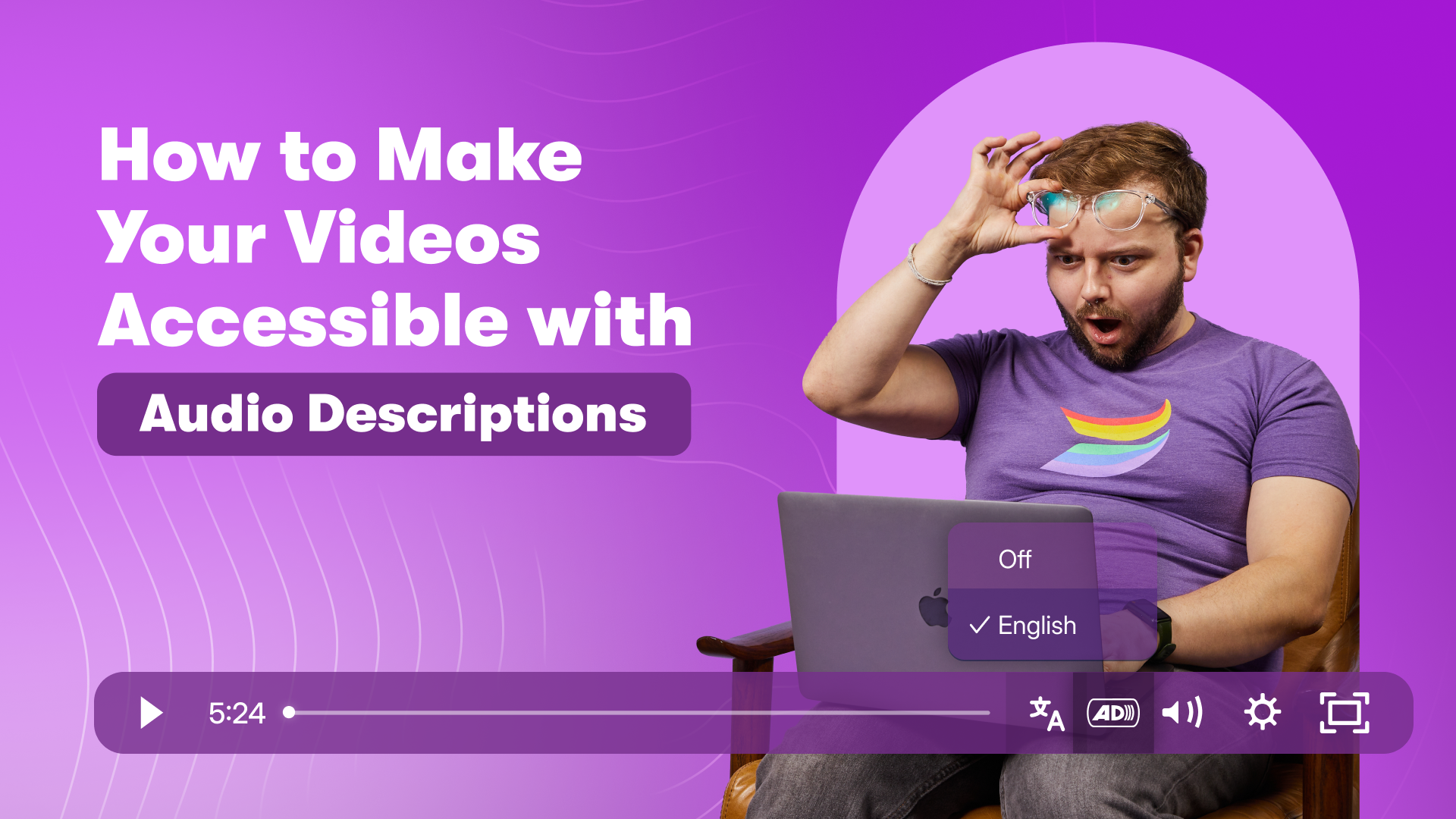Lighting on the Fly
Introduction
We keep video production pretty simple at Wistia. From our camera and audio setup to our conference room studio, we’re not working with super advanced equipment. We like it that way. Keeping things simple and minimalist not only lowers the barrier to entry to making a video; it also makes our video style more accessible to a wider audience.
This minimalist philosophy has a major influence on how I choose to light videos. We’ve dubbed this minimal, flexible technique “Lighting on the Fly.”
When I’m setting up lighting for a video at Wistia, I follow 4 terrifically simple rules:
- Make the shot (and the people in the shot) look pretty.
- Kill any and all shadows on faces.
- Don’t intimidate the person on-camera.
- Use the most convenient lighting option (it’s often best).
Join me on a journey through space and time as we hack lighting and turn the world of traditional “3-point lighting” upside down!
Technique
Effective lighting for your video is all a matter of taste. Being able to look critically at your shot will indicate the areas that could use some supplemental lighting. With a little experimentation and muscle memory, this entire process will become quicker and easier with time.
Here are some things to work on as you develop your lighting instincts.
Ambient Light
Before you even open a light stand, it’s important to select a location to film and roughly find your shot. Ask a friend to stand in, then walk around with a camera and a few lenses to choose your shot location. As you’re finding that perfect shot, consider the ambient light that comes with it. I dub this pose the Dan Mills Blue Steel:
- Avoid shooting under overhead lighting. This type of lighting creates “raccoon eye” shadowing, which isn’t very flattering. Moving your talent over even a foot can often make a huge difference in the nasty shadows cast from overhead lights.
- Natural light from windows or overhead lights can be a blessing and a curse. We embrace the natural light that pours into the Wistia office. But when we’re in the studio using our seamless paper background, we block out all natural light with blackout roller shades. This gives us the maximum amount of control over where exactly the light falls on the scene. If you’re in a pinch and need to block out light, pick up a roll of black plastic and some gaffer’s tape and cover the window! Just beware of any fire code restrictions.
Flat Lighting
For business video, I think it looks best to use flat lighting that eliminates shadows on the face.
Dramatic lighting with harsh shadows tells a far different story than flat lighting. Flat lighting takes away the drama and lets the viewer know that there are no dark secrets lurking in the shadows of someone’s face. It also makes them look less like a zombie.
Light Placement
When you’re shooting someone on screen, position the light sources in front of the camera lens and just above the subject’s eyeline. Here’s an example of our lighting setup when we shoot in front of the seamless paper in our studio:
Make absolutely sure to never light from below. Unless you’re telling a scary story at a campfire, of course.
Lighting people wearing glasses can be tricky. Try to make sure you have UV-coated, anti-glare lenses when possible. If there’s a glare on the lenses, try raising the lights higher and spreading them a bit further apart from the camera. You can also slide the glasses down the nose a bit to aim the glasses away from the lights.
Light Source
This one is pretty simple. The larger the light source, the softer the light. The softer the light, the more flattering the result.
A few tips for creating softer light:
- Use diffusion material in front of your light.
- Bounce smaller light source off of a reflector, or even a piece of white posterboard.
- Consider using fluorescent bulbs. They’re typically softer than LED.
Color Temperature
I’m going to tell you everything you need to know about color temperature in 5 bullet points:
- Incandescent bulbs are 2700K. That’s warm.
- Office fluorescents are around 4200K. That’s a bit cooler.
- Daylight is 5600K. That’s cool.
- Never shoot with auto white balance on your camera.
- Match the color temperature of the scene you’re shooting in as closely as possible.
If you’re dealing with mixed color temperatures, you’re in for a world of hurt. You’ll be dealing with warm light competing with cool light, and you’ll be left with a yucky shot. So do your best to match the color temperature of your shooting environment with the color temperature of the lights you choose to work with.
At Wistia HQ, we’re constantly shooting with natural daylight. As a result, every single light I own is daylight balanced, and our camera rarely leaves 5600K white balance.
I can talk about my obsession with color temperature until I’m 9000K in the face, but I’ll spare you boredom. Instead, check out Vimeo Video School’s “Color Temperature and Size” video if you’re interested in more in-depth insight into the world of color temperature.
Equipment
No one watching your video will know (or care) what you used to light your video. Before I geek out on the gear we use here at Wistia, keep this detail in mind: in my opinion, effective lighting for your video is more about taste than owning the right equipment.
Another huge factor that contributes to our lighting gear selection is intimidation. For someone who isn’t an actor, stepping under the lights is no joke.
Traditionally, video lights are blindingly bright. They’re hot. And they’re intimidating. But alas! We’re in a brave new world. The lights we choose to work with are none of these things! We prioritize making video shoots as comfortable as possible so people can be themselves.
We use LED and fluorescent lights that are cool to the touch. These lights inherently require less power and as a result, don’t throw off as much heat. Combined with the fact that we use DSLR cameras that perform extremely well in low-light situations, we don’t need to blind our subjects by flooding them with crazy bright lights.
Okay. Gear nerd time!
Fluorescent Soft Lights
These fluorescent lights have seen quite a bit of action in our office. We have two of these daylight balanced, dimmable Cool Lights set up all the time in the studio. The Cool Lights are very similar to the Kino-Flo Diva Lights, the gold standard in soft fluorescent lighting. The difference here is that they’re significantly cheaper.
The Cool Lights feature 2 daylight-balanced bulbs that combine into one large light source and produce a soft, flattering light. They’re dimmable, which makes them versatile. They’re great for flooding light on a group of people, but equally as great dimmed down to light a single subject.
The Cool Lights run about $400 per light, which is a heck of a deal, but they’re not necessarily built to sustain the test of time with heavy travel. But since our lights rarely leave the building, we’ve had good luck with the build quality.
LED Ice Lights
This light wand is incredibly versatile - it even doubles as a lightsaber! The Westcott Ice Light produces a really flattering light that is pretty dang soft. It’s daylight balanced, dimmable, and runs on battery power.
If you buy two of these lights, they can combine to make an amazingly powerful, portable light kit. When we traveled to Atlanta to film a customer story, we screwed two Ice Lights on light stands to light our interview. This allowed us to keep our travel gear to a bare minimum.
The Ice Light is also especially useful when you’re shooting B-roll to tie your video together. For quick shots, you can ask a friend to handhold the light while you film your shot. It’s a tad pricey at $450, but this little light can have an enormous impact on the way your shots look and feel.
Ring Lights
We use the Diva Ring Light from Stellar Lighting. It’s daylight balanced, it’s dimmable, it’s awesome. We tried to say it all in this video:
Because the bulb is so huge, it produces a brilliantly soft, flattering light. When used for its intended purpose, the ring light kills all shadows on your talent’s face and makes everyone look like a rock star.
Beware of using the ring light with people who wear glasses. The reflection and glare can be pretty distracting. While this is an awesome effect for a music video, it can draw attention away from your message in other instances.
Skylux
The Westcott Skylux is bright. It’s the equivalent to 1000W incandescent light, but it’s daylight balanced and dimmable.
The Skylux is a very harsh light without any type of diffusion, but this is an effect you can embrace as long as you don’t mind some shadows behind your subject. I loved having this light when I was trying to recreate this beach scene inside of Wistia HQ.
Reflector/Bounce
If you can figure out how to re-fold this thing, it can be an awesome way to add just enough light to a shot.
The reflector is most effective when used in bright light and held super close to the subject. Looking for a low-fi alternative? Try using a big piece of white posterboard or a rolling whiteboard!
Wistia’s DIY Lighting Kit
If you follow basic lighting principles, you can get good results from going lo-fi. As an experiment, we went to Home Depot and built a lighting kit with clothespins, clip lights, and CFL bulbs on the cheap - under $100. Note: look for daylight balanced “High-CRI” or “Full Spectrum” bulbs.
Light on the Fly
If a light accomplishes what you want it to do, who cares if it’s not the absolute best candidate for the job?
Use the lights you already have
The best light to use for a shot is often the most convenient light.
There are a bunch of ways to skin a cat. While this is a frightening visual, this concept applies perfectly to lighting. For example, the lighting technique we use for “the Wistia shot” can be achieved using a bunch of different light combinations. It’s all about the placement and the execution, not about the brand or type of light. Compare the results from three different setups: a Cowboy studio lighting kit (~$68, plus new bulbs at $26), three Westcott Ice Lights (~$1,350), and two Cool Lights fluorescent soft lights and a scoop light (~$850):
The ring light is the ultimate embodiment of Lighting on the Fly. I can’t tell you the last time we used the ring light the way it was intended to be used. Instead, we use the ring light for our Mod Minute series. It’s a convenient fill light for shooting groups. It’s the most accessible (and possibly the most used) light in our entire office, because it’s usually set up in the corner of the studio on a stand with an extension cord plugged into it so it’s easy to grab at any time.
The same concept applies to all of our other lights. When you shift from seeing a ringlight and seeing it as a light source, you instantly open up a plethora of available lighting options. So be scrappy and get crazy with the lights you have!






